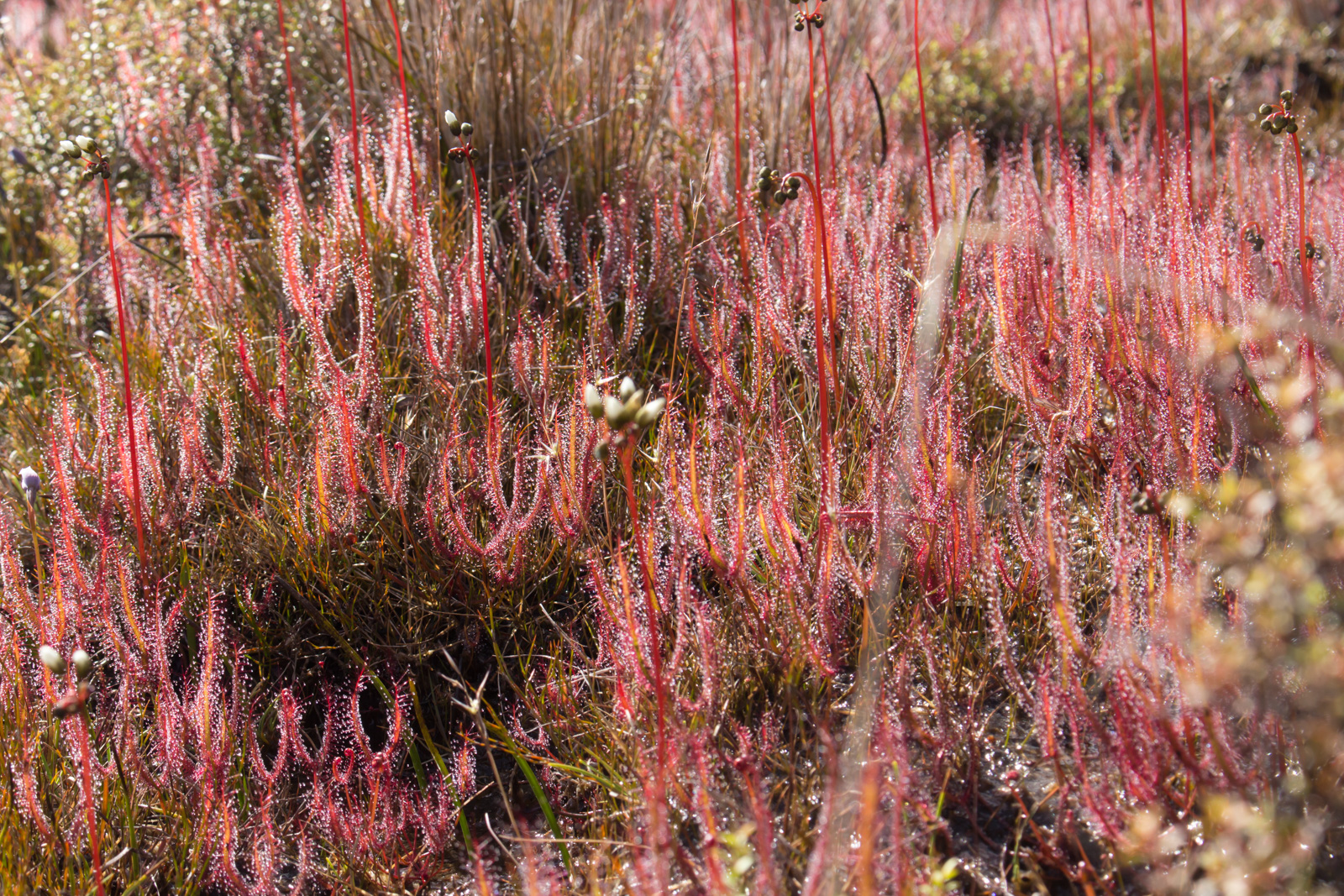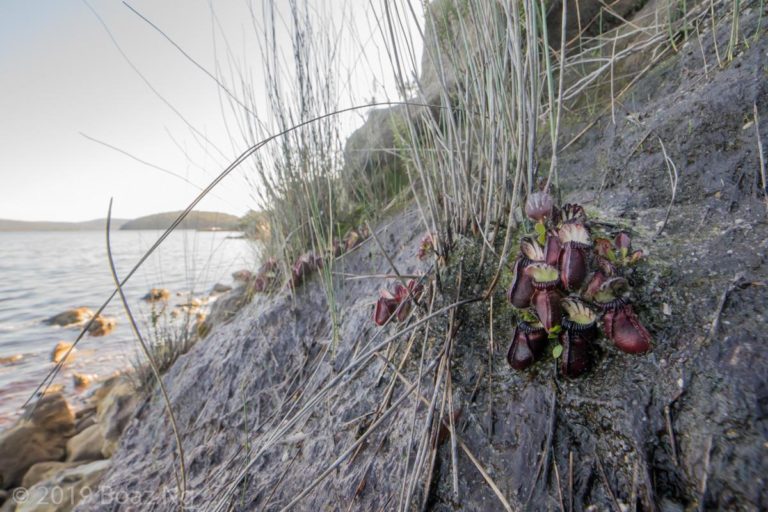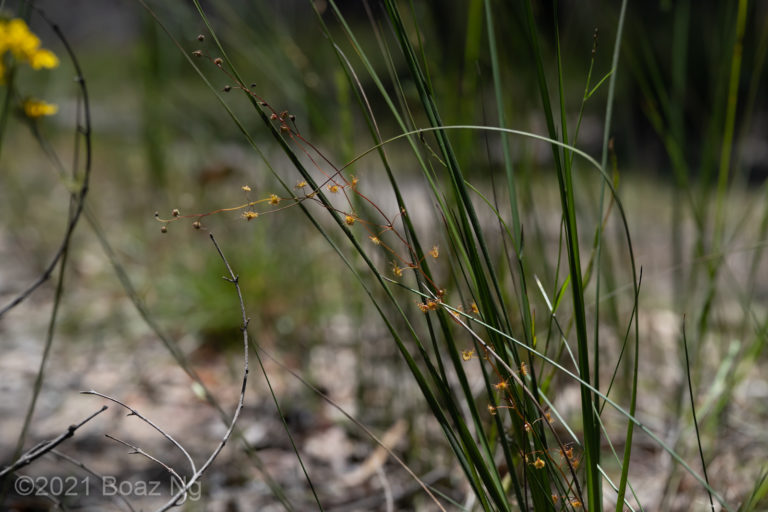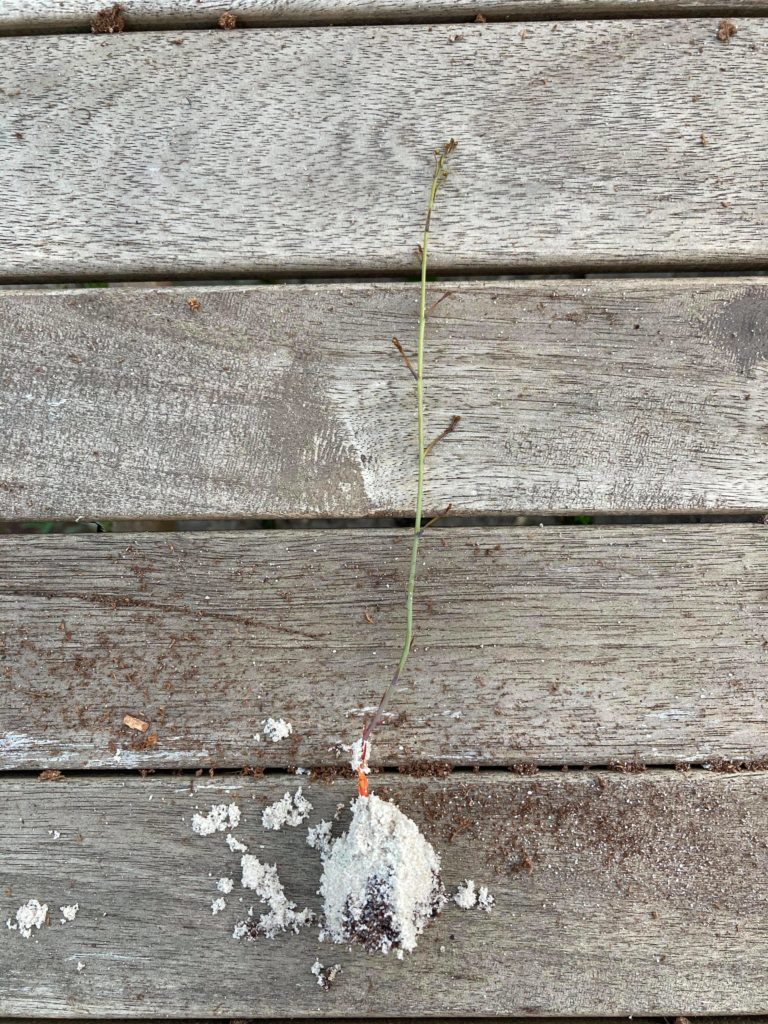Drosera binata is a unique species of sundew characterised by its bifurcating leaves. In cultivation, several forms have been described, which are usually somewhat arbitrarily defined by coloration and the number of bifurcations into the ‘dichotoma’, ‘T-form’, ‘multifida’ and ‘extrema’ varieties. In the wild, these distinctions are sometimes not so clear. I have been fortunate enough to have travelled across its range, from New Zealand, up the east coast of Australia to northern New South Wales. Having observed different forms so many times in the wild, I hope to offer some first-hand insight into the varieties of the species.
Drosera binata is characterised by its forking lamina, which is borne on the end of a thick petiole. There is considerable variation across its range, with mature sized plants bifurcating anywhere from once to tens of times and ranging in length from just several centimetres to up to 1 meter. The plants grow a thick flower stem that terminates in an inflorescence of large white blooms. In general, the species grows in sunny situations and is associated with water, growing in wet loam and moss on the edge of watercourses, ponds and on water seepages.

Drosera binata var. ‘dichotoma’ growing in the Blue Mountains west of Sydney.
One of the most distinctive varieties is the ‘dichotoma’ form. This variety grows large leaves that have a golden green coloration, with stems ranging from around 0.2-1 meter in length. The ‘dichotoma’ epithet refers to the number of bifurcations, with mature specimens typically branching twice in the leaf to form four tips. However, it is also common to observe specimens with anywhere from 2 to 8 terminal points. The plants grow in sandstone substrates around the latitude of Sydney at both coastal and mountainous locations. One of the most stunning sites occurs in the Blue Mountains west of Sydney, where groundwater from the plateaus seeps out of the vertical cliff walls. In these exposed seepages, thousands of Drosera binata ‘dichotoma’ colonise the walls, hanging down onto the walking tracks that lead into the valley.
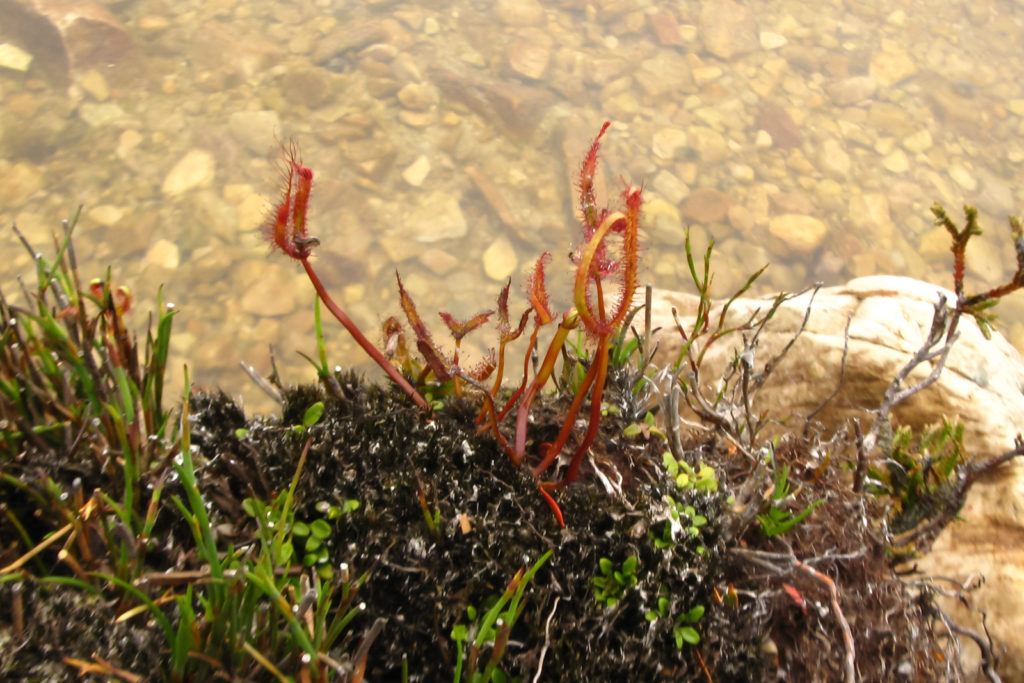
The Tasmanian alpine form is characterised by thick, fleshy stems and diminutive stature
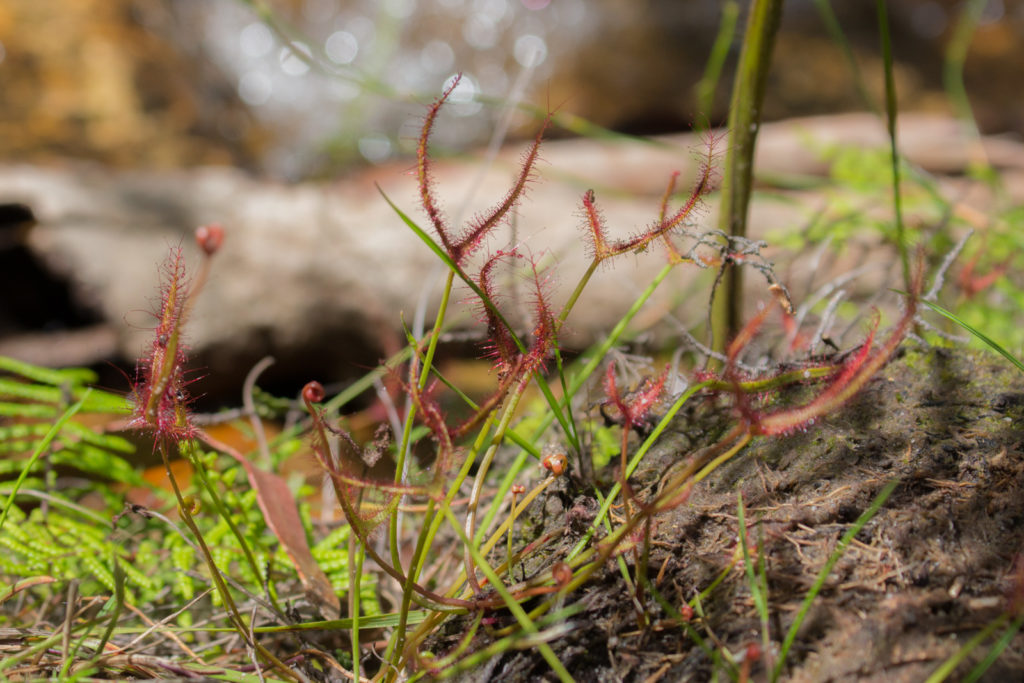
. Plants in western Victoria are small, thin stemmed and have red tentacles on a dark green base.
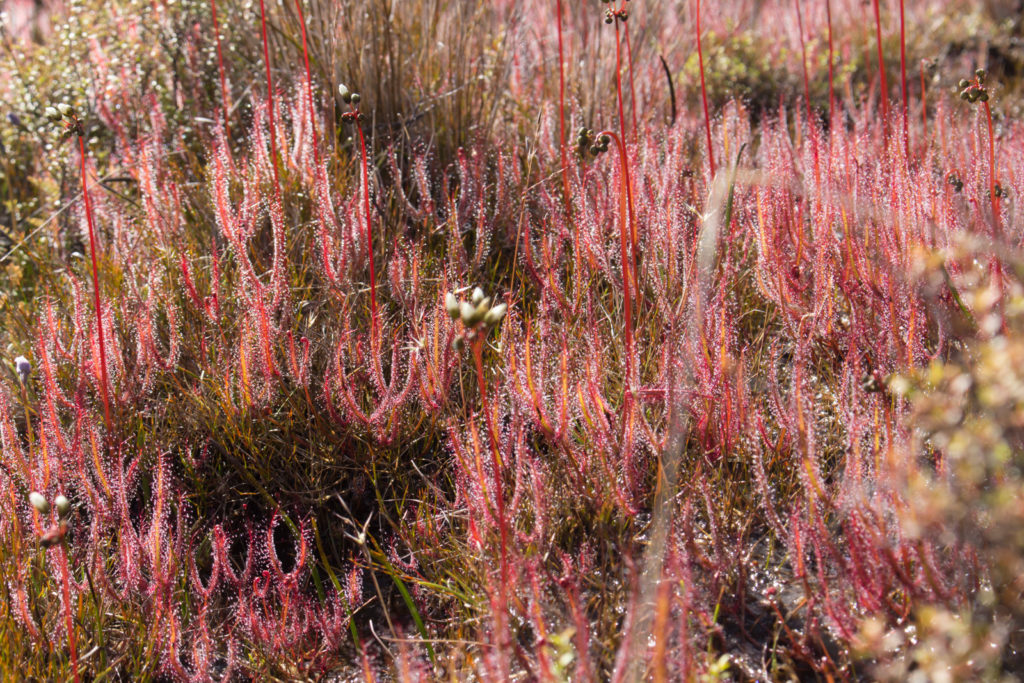
The New Zealand forms can be much larger than the Australian T-forms.
Another cultivation name is the ‘T-form’, which refers to small plants that generally bifurcate once to form a ‘V’ shaped leaf, although the largest leaves can bifurcate once more. All plants that mainly grow two points are lumped together in this term, although I suspect that these plants consist of two or more distinct subspecies. The T-form plants are generally restricted to southern latitudes, and I have seen it occurring in the Australian states of Victoria, Tasmania and across New Zealand. In the alpine mountains of Tasmania grows a diminutive form that has thick fleshy stems and bright red coloration. These are no doubt adaptations to the alpine environment, where high UV levels and unpredictable cold snaps favour small resilient plants. A similarly sized variety grows in western Victoria, but can be distinguished by its thin stems. This form is coloured like ‘multifida’ variety plants with an olive green palette and red tentacles. ‘T-form’ plants also grow widely in New Zealand, where they attain a much larger size than the Australian forms. Plants in this country are often fully colored a vivid red, with long upward pointing laminas. From my observation of the wide variation amongst ‘T-form’ plants, it is a personal opinion that this general description actually encompasses several morphologically distinct varieties.

Drosera binata f. ‘multifida’ in Sydney
The final variety is the ‘multifida form’, referring to large reddish plants that produce more than one bifurcation. It is distinguished from the ‘T-form’ and ‘dichotoma’ forms by its greater amount of leaf points, large stature and red coloration. Plants in this group grow a red tentacles on a typically olive to bronze leaf surface, with leaf tips that arch slightly to form a talon like morphology. The plants are relatively large, with mature specimens typically with leaves around 20 cm in length. Oftentimes, I see this variety defined by an arbitrarily set amount of leaf points. It seems that in nature, the situation is more complex and similar large red plants occupy the east coast of Australia. A loose trend occurs where the plants in the north grow larger and have more points than their southern counterparts. Around the latitude of Sydney, the multifida plants typically have somewhere from 6 to 16 terminal points.

A Drosera binata ‘extrema’ with 77 leaf points.

A specimen with a more typical amount of points in the same swamp.
At the extreme end of the spectrum exists the form commonly referred to as Drosera binata var. multifida f. extrema. This variety describes plants that naturally occur towards the northern end of its distribution around Queensland and northern New South Wales. Whilst the number of growth points is not really a reliable indicator of variety, plants in these localities are truly capable of producing an extreme number of points. At a location in northern New South Wales, I have seen specimens that regularly produce more than 50 points, although this is limited to the largest plants that break through the dense growth reach these proportions. I even discovered a single specimen with 77 points! It is worth noting that many of the specimens at this location grow a more modest amount of points, and that plants from this location never reach the same proportions in cultivation (from personal communications with several growers). It is not known whether the ‘extrema’ form represents a unique subspecies from the southern ‘multifida’ forms, or just an extreme variant in the complex.
It is apparent that the names given to Drosera binata forms in cultivation fail to accurately capture the diversity of the plants. From my observations of the many unique forms of the plants in the wild, it is likely that there are several distinct taxa that have been grouped together as a single species complex. There is currently ongoing scientific research that will hope to clarify the taxonomy of the plants and I look forward to learning more in the future.

